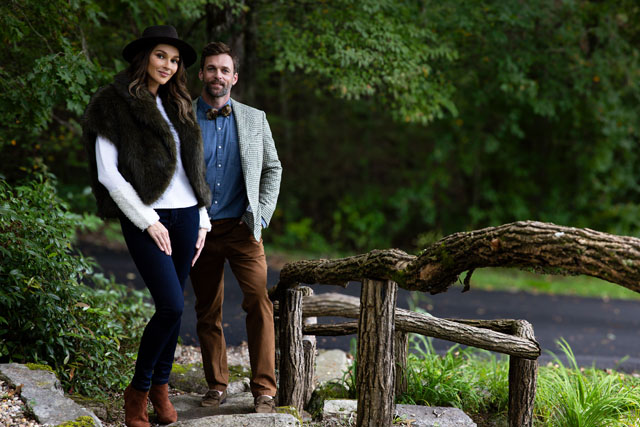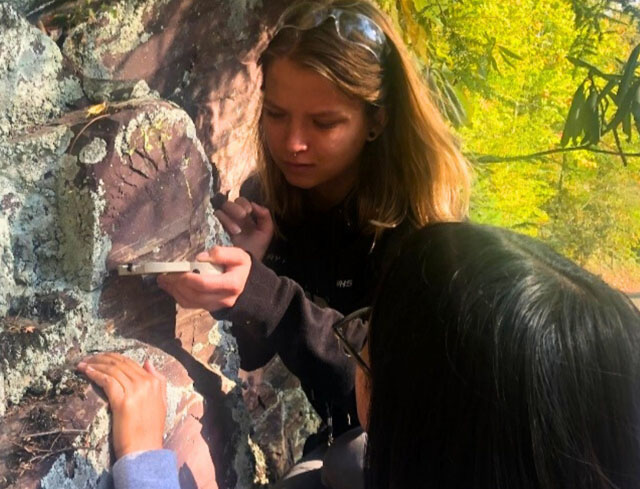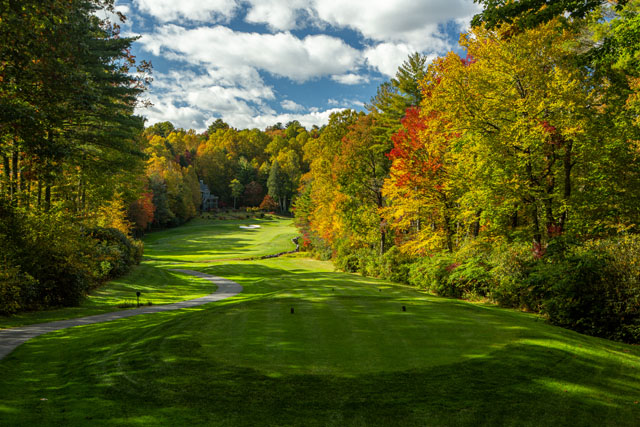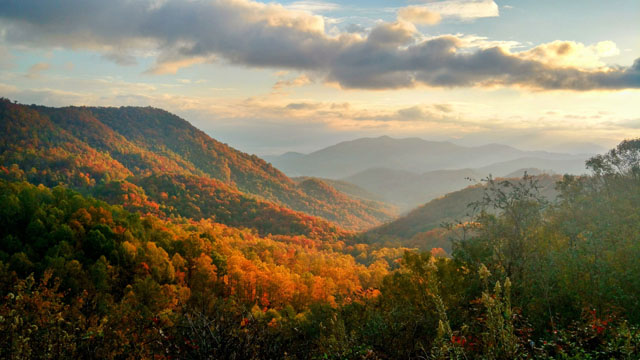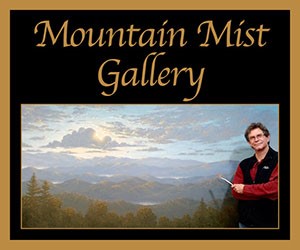The Legendary Black Bears of the Highlands-Cashiers Plateau
01 Oct 2025
History, folklore, and the call of the wild
October-November 2025
Written By: By Kingsley Guy
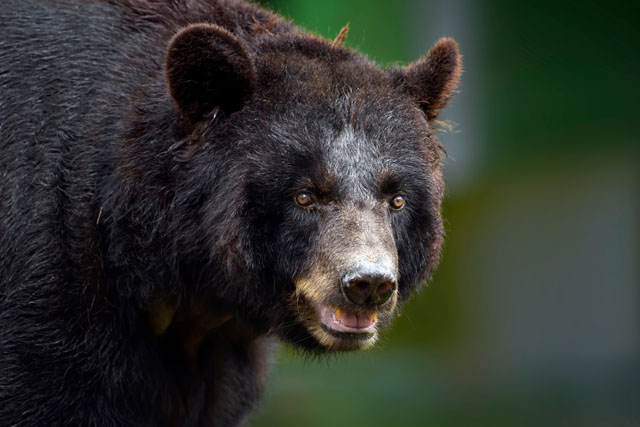
Many people picture the black bear as a brute to be feared. In the Cherokee tradition, however, the bear is said to teach humans about strength and kindness. As Cherokee legend has it, a group of villagers once decided to leave their clan and live in the wilderness where food was plentiful. As time went on, they began to walk on all fours and grow thick fur. They followed the ways of the bears, learned from them, and eventually became bears. Thus was born the link, and kindred understanding, between humans and bears that has passed down through the generations to this day.
Not long ago, the privilege of seeing a black bear on the Highlands-Cashiers Plateau, or anywhere else in North Carolina, was next to non-existent. Timber harvesting, the clearing of land for farming and urban expansion, over-hunting, and the destruction of an important food supply by the chestnut-tree blight contributed to the decimation of the black bear population.
Scientists believe that before the arrival of Europeans, 50,000 or more bears lived within the boundaries of what is now North Carolina. By the middle of the 20th century, the number of bears roaming the Tar Heel State had fallen to only about 1,500. It appeared that the black bear would suffer the same fate as the gray wolf and the panther, both of which had been eliminated in North Carolina by the end of the 19th century.
The state’s bear population, however, has rebounded to an estimated 20,000 today, with about 8,000 of that number living in the mountains. Indeed, the repopulation fostered by hunting restrictions, reforestation, and the establishment of bear preserves represents one of the great success stories in the regeneration of a species that once was on the verge of extirpation.
A shift in national consciousness made this possible. After centuries of unbridled expansion into the untamed wilderness, more and more Americans began seeing a need to save the flora and fauna that made the nation America the Beautiful … and the bountiful. This change in attitude was due in no small part to the influence of Native American cultures whose lore and understanding of nature, and the need to live in harmony with it, began seeping into the consciousness of the nation as a whole.
Because of its mythical and mystical kinship with humanity, the bear in Cherokee lore served as a mentor and a teacher. The spirit of a great bear is said to have instructed Cherokee healers in which herbs, leaves, and roots to use in balms and tonics. By observing what sick or injured bears ate, healers gained further understanding of the medicinal arts.
During a time of famine, a sacred bear is said to have sacrificed its life so that villagers could eat. The bear’s blood is symbolized in the reddish hue of varieties of Cherokee corn used in sacred rituals.
In another story, a hunter stalked a huge bear for days before finally wounding it. As the hunter closed in for the kill, the great bear rose on two legs as a human would and warned the hunter of dire consequences unless he properly honored its spirit. The hunter did so, and the bear’s spirit blessed rather than cursed the hunter. In keeping with the legend, rituals honoring the bear before and after the hunt played an important role in Cherokee life.
In Cherokee lore, a great spirit bear served as the guardian of the wilderness, and it would unleash its wrath upon those who violated hunting rituals or willfully desecrated the forest and the mountains. In a sense, the myth reflects the scientific understanding of the harmful consequences to human life caused by the polluting of lakes and streams, the decimation of animal and insect populations, and the clear-cutting of forests.
The mythos of the bear also played an important role in the culture of European settlers and their descendants. Tales of “ghost bears” or “devil bears” made their rounds among the campfire gatherings of those on the frontier. Such mystical bears were said to be impervious to bullets. Some tales said the creatures could shape-shift and walk through solid objects.
Perhaps the most famous of these bears in mountain folklore was “Ole Slewfoot,” a name given to a giant bear with a crooked foot that could outwit hunters by disappearing into seemingly impenetrable thickets or by swimming long distances in rivers and streams. Mention of Ole Slewfoot made it into newspapers on the Plateau well into the 20th century. The legendary bear was even immortalized in the ballad, Ole Slewfoot, recorded by Johnny Cash, the Grateful Dead, Billy Strings, and others.
As with the Cherokee, the bear for mountain folks had a link to medicine. Rubbing bear grease on a wound was said to heal it rapidly, and eating bear meat and cooking food in bear grease was believed to extend a person’s life.
The bear hunt became a part of both mountain sustenance and tradition.
An important participant in many hunts was the Plott Hound, a breed derived from a type of German bloodhound brought to North Carolina in the mid-18th century by the German immigrant Johannes Plott. The breed was perfected in Haywood County by his son. Bred for their endurance, strength, and fearlessness, the Plott Hound became the dog of choice for many bear hunters. So important was it to the culture of the mountains that in 1989 the North Carolina General Assembly designated the Plott Hound as the official state dog.
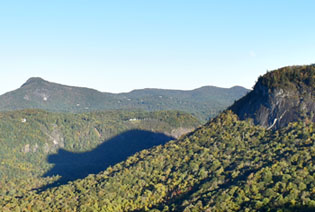
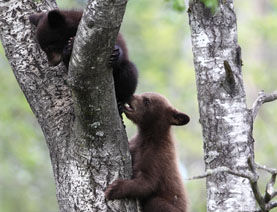
A twice-yearly occurrence on the Plateau is the appearance of the Shadow of the Bear, best visible from Rhodes Big View Overlook on U.S. 64 between Cashiers and Highlands. Pure materialists would explain away the shadow as simply the interference of sunlight by a part of Whiteside Mountain, which makes for an entertaining spectacle in the valley below. For the more spiritually minded, however, it’s possible to find symbolic meaning in such a synchronistic event.
Is it merely a coincidence that the Shadow of the Bear appears in a location where the bear played a vital role in the spiritual life of the people? The Shadow of the Bear is not linked directly to the legends of the Cherokee, but does not the tribal lore speak of a mystical bear that protects the mountains and forests from human abuse?
The shadow appears in mid-October when the valley colors burst forth in all their glory and disappears in early November as the forest and the bears begin to wind down for the winter. It appears again in mid-February and lasts into early March when the valley and the bears begin to emerge from their torpor. Thus, the shadow can be viewed as a symbolic representation of the cycle of life.
If we choose to see it as such, the Shadow of the Bear could also serve as a reminder to the people of the Plateau that we have been granted a second chance to live in harmony with one of nature’s most magnificent creatures..

